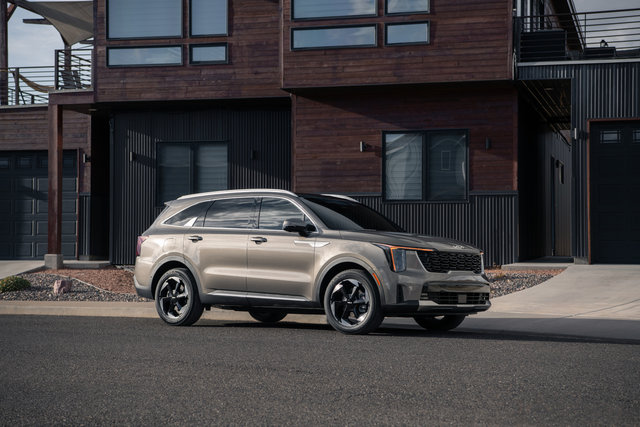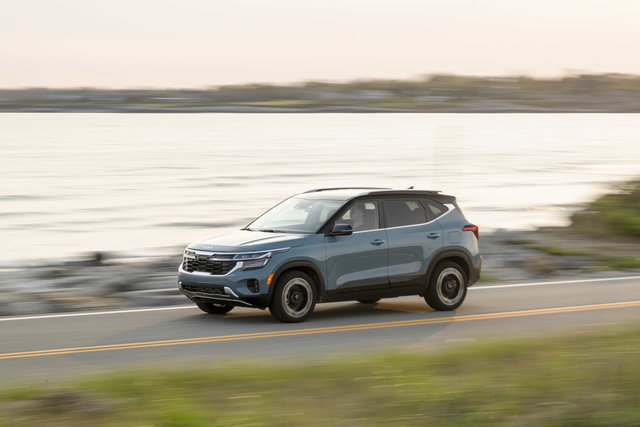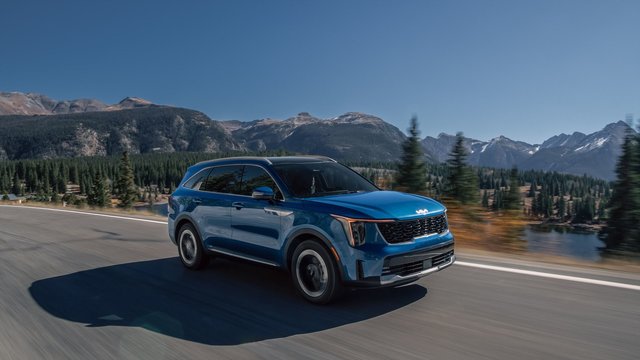For Quebec drivers weighing the switch to electrified power, the 2026 Kia Sorento PHEV offers a practical middle ground between full electric vehicles and traditional gas-only SUVs. This plug-in hybrid three-row SUV delivers 55 kilometres of all-electric range for daily commutes, backed by a 1.6-litre turbocharged engine for longer trips—eliminating range anxiety while reducing fuel costs and...
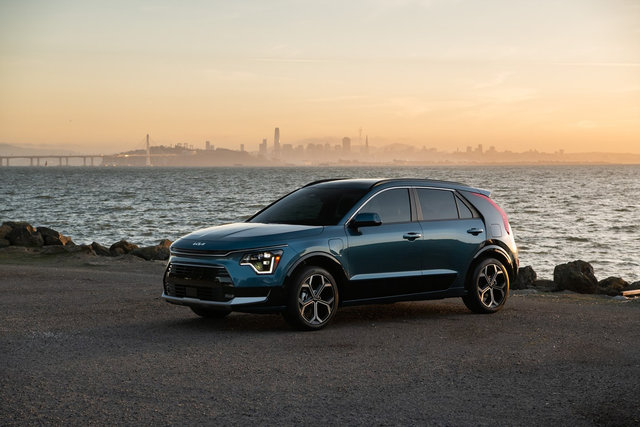
Choosing between the 2026 Kia Niro PHEV and Niro HEV comes down to how you drive. Both models offer hybrid efficiency, compact practicality, and modern technology, but they work differently. The PHEV (Plug-In Hybrid Electric Vehicle) gives you electric range for daily errands and requires regular charging. The HEV (Hybrid Electric Vehicle) provides hybrid efficiency without needing to plug in.
If you're deciding between these two electrified Niro models, here's what you need to know about how each one fits different driving patterns in Laval and surrounding areas.
At a Glance: 2026 Kia Niro PHEV vs HEV
|
Feature |
Niro PHEV |
Niro HEV |
|---|---|---|
|
Combined Power |
180 hp |
139 hp |
|
Combined Torque |
195 lb-ft |
195 lb-ft |
|
Electric Range |
Up to 55 km |
No plug-in capability |
|
Fuel Economy (combined, gas + electric) |
2.1 Le/100 km |
4.4 L/100 km (LX, EX, EX Premium) |
|
Fuel Economy (gasoline only) |
4.8 L/100 km |
4.4 L/100 km (LX, EX, EX Premium) |
|
Battery Capacity |
11.1 kWh |
1.32 kWh |
|
Charging Required |
Yes (240V recommended) |
No charging needed |
|
Drivetrain |
Front-wheel drive |
Front-wheel drive |
|
Cargo Space (rear seats up) |
550 L |
646 L |
|
Fuel Tank Capacity |
37 L |
42 L |
Understanding the Key Difference: Plug-In vs Hybrid
The main difference between these two models is the battery size and charging capability.
The Niro PHEV has an 11.1 kWh battery that you charge at home using a standard outlet or dedicated charging station. With a full charge, you get up to 55 km of all-electric driving range. Once the battery runs low, the gasoline engine takes over automatically. This setup lets you drive electric for local trips and use gasoline for longer drives.
The Niro HEV has a smaller 1.32 kWh battery that recharges itself through regenerative braking. You never plug it in. The hybrid system uses the electric motor to assist the gasoline engine, improving fuel economy and reducing emissions. The electric motor can't power the vehicle on its own for extended distances—it works together with the gasoline engine.
Who Should Choose the Niro PHEV?
The Niro PHEV makes sense if you:
- Drive mostly within Laval and can charge at home: If your daily routine includes short trips around Boulevard des Laurentides, running errands, or commuting within the city, the 55 km electric range can cover most of your driving without using gasoline.
- Have access to a 240V outlet: While you can charge the PHEV using a standard 120V outlet, it takes much longer. A 240V outlet (like those used for electric dryers) charges the battery faster and makes daily charging more practical.
- Want lower fuel costs for local driving: When you're driving on electric range, your fuel costs drop to near zero for local trips. The PHEV offers the lowest operating costs if you charge regularly.
- Qualify for government incentives: Plug-in hybrid vehicles may qualify for federal or provincial rebates, reducing the purchase price. Check current programs to see if the Niro PHEV is eligible.
Key Advantages of the Niro PHEV:
- 55 km of electric range covers most daily errands without gas
- Lower fuel costs if you charge regularly (2.1 Le/100 km combined)
- 180 hp provides more power than the HEV
- Unlimited range when gasoline engine is running
- Potential government incentives
Who Should Choose the Niro HEV?
The Niro HEV makes sense if you:
- Don't have reliable access to charging: If you park on the street, rent an apartment without charging access, or travel frequently, the HEV eliminates the need to plug in.
- Want simpler operation: The HEV works like a regular car. You fill the tank with gas and drive. No charging cables, no waiting for the battery, no planning around charging times.
- Drive longer distances regularly: If you frequently drive outside Laval—whether for work, family visits, or weekend trips—the HEV's larger fuel tank (42 L vs 37 L) and simpler operation make it more convenient.
- Prefer lower initial cost: The HEV typically costs less upfront than the PHEV, and you don't need to install charging equipment at home.
Key Advantages of the Niro HEV:
- No charging required—just fill the tank and drive
- Simpler daily operation
- Larger fuel tank (42 L vs 37 L)
- More cargo space (646 L vs 550 L with rear seats up)
- Lower initial purchase price
- Excellent fuel economy (4.4 L/100 km) without needing to plug in
Fuel Economy Comparison: Real-World Scenarios
Let's compare how each model performs in different driving situations:
Scenario 1: Daily Laval Commute (30 km round trip)
Niro PHEV: If you charge overnight, your 30 km commute happens entirely on electric range. Fuel cost: near zero. Monthly fuel cost (assuming 20 work days): minimal, with occasional gas use for longer trips.
Niro HEV: Your 30 km commute uses the hybrid system. Fuel economy: 4.4 L/100 km. Monthly fuel cost (assuming 20 work days): approximately 26.4 litres of gas.
Winner: PHEV (if you charge daily)
Scenario 2: Weekly Trip to Montreal (80 km round trip)
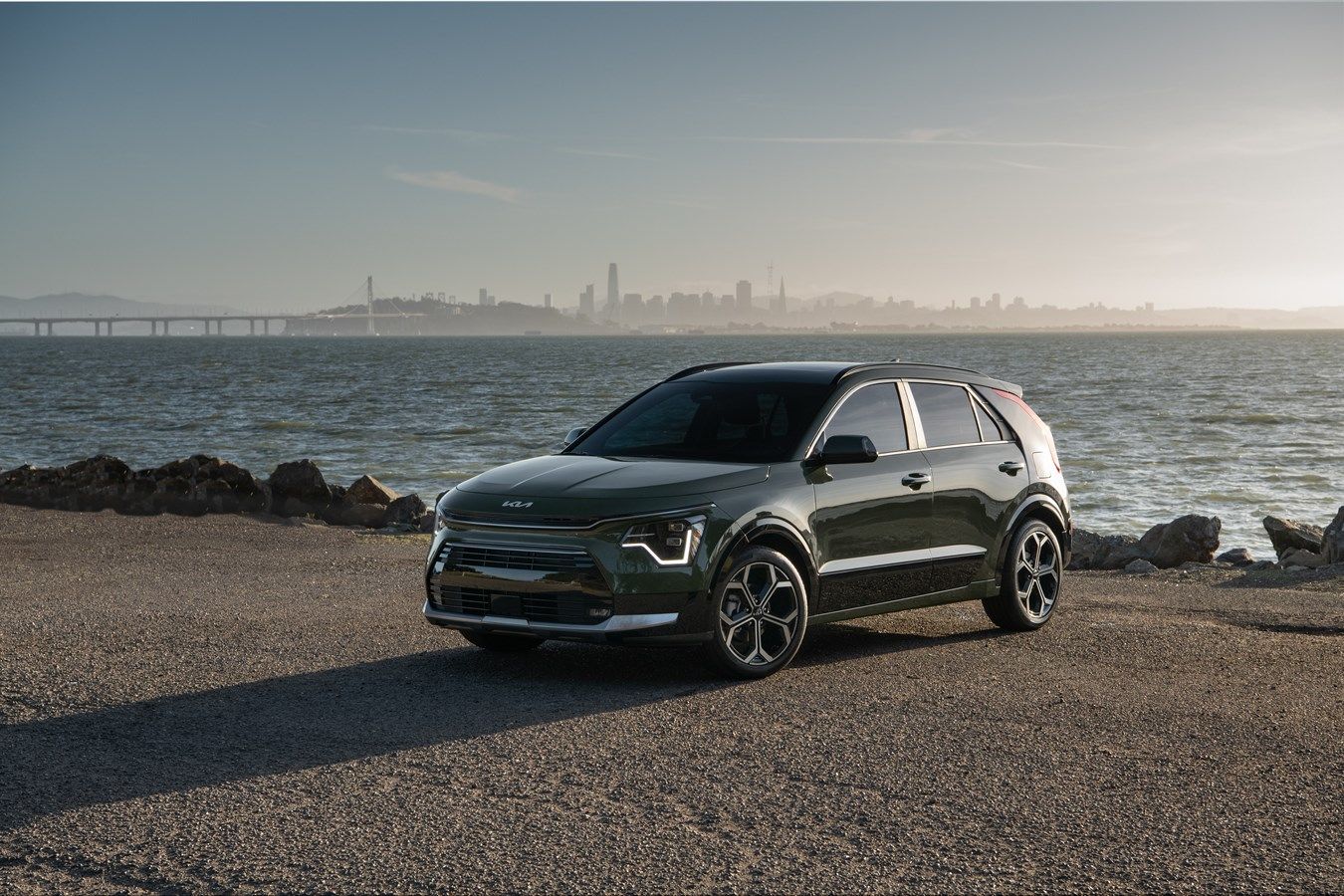
Niro PHEV: The first 55 km run on electric range, then the gasoline engine takes over for the remaining distance. Average fuel economy: 2.1 Le/100 km combined (if you charge between trips).
Niro HEV: The entire trip uses the hybrid system. Fuel economy: 4.4 L/100 km.
Winner: PHEV (if you charge regularly), but the difference is smaller on longer trips
Scenario 3: No Access to Home Charging
Niro PHEV: If you can't charge regularly, you're driving a heavier vehicle (due to the larger battery) on gasoline alone. Fuel economy drops to 4.8 L/100 km—slightly worse than the HEV.
Niro HEV: Operates normally with no charging needed. Fuel economy: 4.4 L/100 km.
Winner: HEV (by a small margin)
Power and Performance Differences
The Niro PHEV produces 180 horsepower, while the HEV delivers 139 horsepower. In everyday driving, you'll notice the difference when merging onto highways, passing slower traffic, or accelerating from a stop.
The PHEV feels more responsive and provides stronger acceleration. The HEV is still adequate for daily driving, but it's not as quick. If performance matters to you, the PHEV has the edge.
Both models use front-wheel drive and handle well in normal driving conditions. Neither is designed for off-road use or harsh winter terrain, but they're both capable daily drivers on Quebec roads.
Technology and Features
Both the Niro PHEV and HEV share most interior features and technology:
- Wireless Apple CarPlay and Android Auto (available)
- 10.25-inch multimedia interface with navigation (available)
- Digital Key (available)
- Heated front seats and heated steering wheel (available)
- Smart power liftgate (available)
- Advanced Driver Assistance Systems including Forward Collision-Avoidance Assist, Lane Keeping and Follow Assist, and Smart Cruise Control
The main difference is that higher PHEV trims may include additional features not available on base HEV trims. Check specific trim levels to compare equipment.
Cargo Space Considerations
The Niro HEV offers 646 L of cargo space with the rear seats up, compared to 550 L in the PHEV. That's about 96 L less space in the PHEV due to the larger battery pack.
For most daily use, both models provide enough cargo room for groceries, sports equipment, or small luggage. If you regularly haul larger items or need maximum cargo space, the HEV has the advantage. With rear seats folded, the HEV offers 1,805 L while the PHEV provides 1,546 L.
Cost of Ownership Over Time
The total cost of ownership depends on several factors:
Initial Purchase Price
The PHEV typically costs more upfront, but may qualify for government rebates that reduce the price. The HEV costs less initially and doesn't require charging equipment installation.
Fuel Costs
If you charge the PHEV regularly and drive mostly within its electric range, your fuel costs will be significantly lower than the HEV. If you can't charge regularly, the HEV may be cheaper to operate due to better fuel economy on gasoline alone.
Maintenance
Both models use similar hybrid powertrains and should have comparable maintenance costs. Regular service intervals, oil changes, and brake service apply to both.
Electricity Costs
Charging the PHEV adds a small amount to your monthly electricity bill. The exact cost depends on your utility rates and how often you charge, but it's generally much cheaper than gasoline per kilometre.
Which Niro Model Fits Your Driving Style?
Choose the Niro PHEV if you:
- Drive mostly within Laval and surrounding areas
- Have access to home charging (240V outlet)
- Want the lowest possible fuel costs for daily driving
- Value the extra power and performance
- Qualify for government incentives
Choose the Niro HEV if you:
- Don't have reliable access to charging
- Prefer simpler operation without plugging in
- Drive longer distances regularly
- Want lower upfront cost
- Need slightly more cargo space
Test Drive Both Models at Lallier Kia de Laval
The best way to decide between the Niro PHEV and HEV is to drive both. Visit our dealership in Laval to experience how each model handles, compare the power delivery, and see which one fits your daily routine. Our team can help you calculate fuel savings, explain available incentives, and find the right Niro trim for your needs.
To learn more about the 2026 Kia Niro lineup, visit Kia.ca
Other Articles That May Interest You
Highway 440 runs right through the heart of Laval, connecting neighbourhoods and serving as a critical east-west corridor for thousands of drivers every day. With its steady flow of traffic, frequent merging zones, and multiple entry and exit points, this highway demands constant attention from drivers. One momentary blind spot check can mean the difference between a smooth lane change and a...
Choosing the right vehicle for your daily commute means matching your driving habits, route conditions, and lifestyle needs to a vehicle's capabilities. The 2026 Kia Sorento offers three distinct powertrains—gasoline, hybrid, and plug-in hybrid—each designed for different commuting scenarios. Before you decide, ask yourself these key questions to determine which Sorento configuration fits your...




